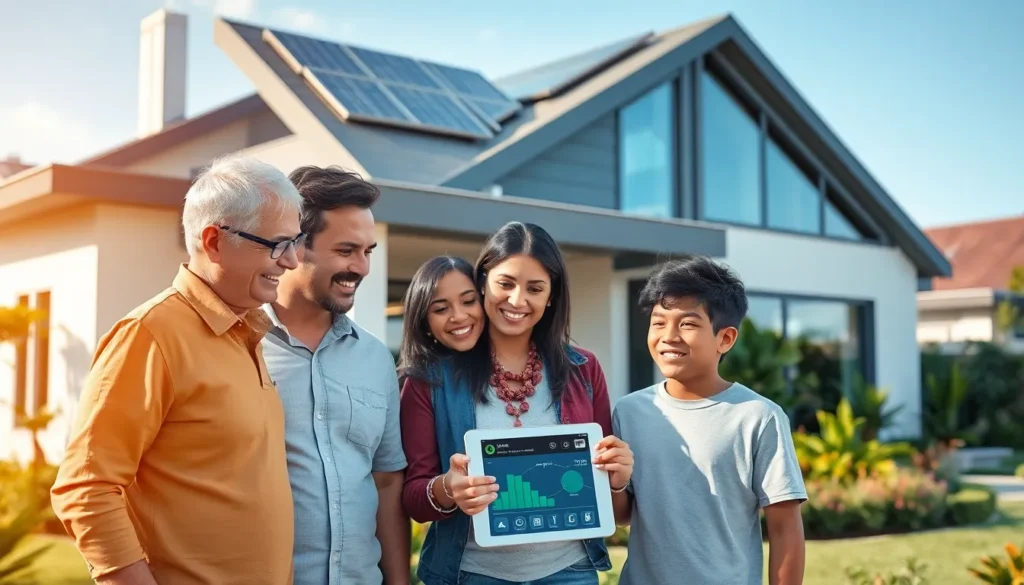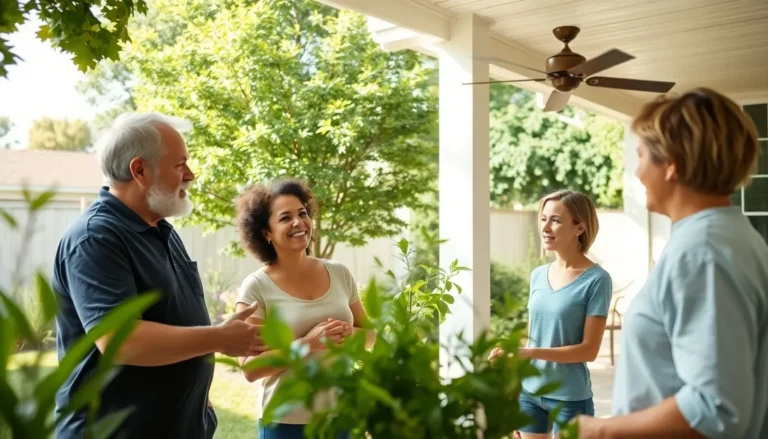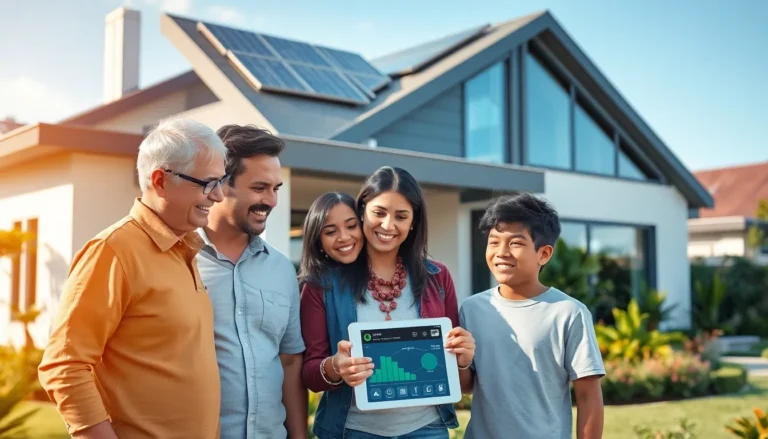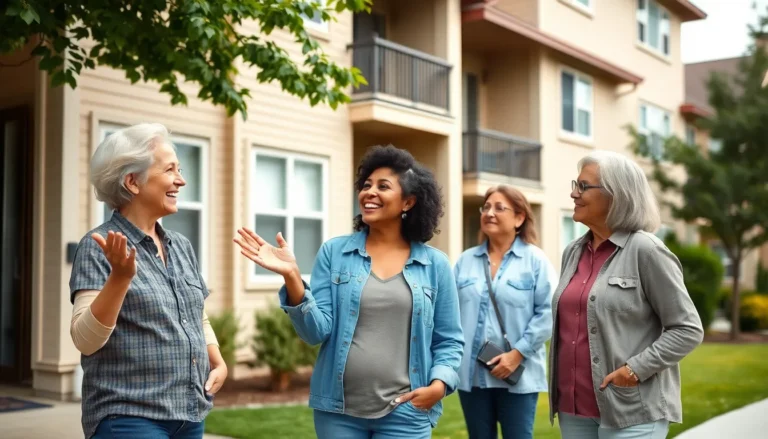Imagine living in a home that doesn’t just shelter you but also saves the planet. Welcome to the world of zero emissions homes, where the air is as fresh as your morning coffee and your carbon footprint is practically nonexistent. These eco-friendly havens are not just a trend; they’re a lifestyle choice that combines sustainability with style.
Table of Contents
ToggleOverview of Zero Emissions Homes
Zero emissions homes combine energy efficiency with sustainable design. These structures produce net-zero greenhouse gas emissions, enhancing environmental health. Effective insulation, efficient appliances, and renewable energy sources define their architecture. Homeowners often utilize solar panels for electricity generation while implementing energy conservation techniques.
Moreover, these homes rely on advanced materials, such as insulated concrete forms and non-toxic building products. Their construction reduces energy consumption and minimizes waste. Many designs incorporate sustainable landscaping, which supports local ecosystems.
As a result, zero emissions homes not only lower utility bills but also improve indoor air quality. Families breathe cleaner air, contributing to better overall health. Various studies indicate that occupants of energy-efficient homes experience fewer respiratory issues and reduced allergies.
With the rise in climate awareness, many local governments offer incentives to promote zero emissions buildings. Homebuyers often receive tax credits or rebates, making the transition financially appealing. Essential features of these homes include geothermal heating, which further decreases fossil fuel reliance.
Additionally, advancements in smart home technology aid in monitoring energy usage. Homeowners gain insights into consumption patterns, allowing for informed decisions on energy savings. Understanding the benefits and potentials of zero emissions homes fosters motivation for adopting these practices in more neighborhoods.
Key Components of Zero Emissions Homes

Key components define zero emissions homes, emphasizing energy efficiency and renewable energy sources for sustainable living.
Energy Efficiency
Energy efficiency is foundational to zero emissions homes. Effective insulation keeps indoor temperatures consistent, reducing energy consumption for heating and cooling. High-efficiency appliances consume less energy compared to standard models, directly lowering utility bills. Smart home technology allows monitoring of energy use, presenting opportunities for further savings. Quality construction materials, such as insulated concrete forms, contribute to decreasing energy waste. Many homeowners also engage in energy audits to identify areas for improvement, enhancing overall efficiency.
Renewable Energy Sources
Renewable energy sources play a crucial role in achieving net-zero emissions. Solar panels often serve as a primary method for generating clean electricity. Wind turbines and geothermal systems further reduce reliance on fossil fuels. Each of these energy sources provides sustainable alternatives that complement reduced energy use. Homeowners can track energy production and consumption, empowering them to adjust usage according to availability. Local incentives may also encourage the installation of these systems and enhance affordability, increasing the appeal of renewable solutions.
Benefits of Zero Emissions Homes
Zero emissions homes provide significant advantages, making them an appealing choice for many. These structures not only offer comfort but also enhance environmental sustainability.
Environmental Impact
Zero emissions homes significantly reduce greenhouse gas emissions, contributing to climate change mitigation. Clean energy sources like solar panels and wind turbines generate power without harmful emissions. Effective insulation and energy-efficient appliances further minimize energy consumption. Sustainable landscaping also supports local ecosystems, fostering biodiversity while enhancing property aesthetics. Air quality improves as these homes use non-toxic building materials, creating a healthier living environment. Enhanced air quality leads to reduced respiratory issues for occupants, promoting overall well-being. Integration of renewable technologies showcases a commitment to environmental stewardship.
Economic Savings
Potential financial savings from zero emissions homes are substantial. Lower energy bills become evident with energy efficiency practices, which decrease energy demand. Tax credits and rebates offered by local governments further reduce upfront costs for solar installations and energy improvements. Homeowners often recover investments in renewable energy through savings over time. Increased property values frequently accompany energy-efficient upgrades, making these homes attractive in the real estate market. Maintenance costs diminish while energy expenses decline, optimizing budget management. Comprehensive monitoring through smart technology aids in identifying savings opportunities. Overall, zero emissions homes present a financially wise choice while contributing to a sustainable future.
Challenges in Implementing Zero Emissions Homes
Implementing zero emissions homes presents various challenges that need careful consideration. Obstacles such as initial costs and regulatory hurdles can affect adoption and sustainability.
Initial Costs
Upfront costs significantly impact the decision to build or retrofit zero emissions homes. Investments in renewable energy systems like solar panels and high-efficiency appliances can reach tens of thousands of dollars. While these expenses often lead to long-term savings, many homeowners hesitate due to their immediate financial burden. Additionally, advanced construction materials and sustainable practices may increase expenditures. Some families opt for financing solutions, though loans can create additional financial strain. Clearly, understanding the long-term benefits of energy savings and environmental impact is essential for overcoming these initial challenges.
Regulatory Hurdles
Navigating regulatory hurdles often complicates the implementation of zero emissions homes. Building codes and zoning regulations can differ significantly across regions, imposing restrictions on innovative designs and materials. Some jurisdictions may lack clear guidelines for renewable technologies and energy efficiency standards. Compliance with existing regulations can delay projects and inflate costs. Local governments may also impose higher fees for permits related to energy-efficient upgrades. Consequently, addressing these hurdles requires coordination among builders, policymakers, and homeowners to streamline processes and encourage adoption.
Future Trends in Zero Emissions Homes
Innovative technologies shape the future of zero emissions homes. Increasing reliance on smart home systems enhances energy management. Integrating artificial intelligence allows residents to optimize energy consumption effortlessly. These systems often provide real-time data, enabling informed decisions on energy usage.
Renewable energy sources are becoming more affordable. Solar panel prices have decreased significantly over the past decade, making them accessible for many homeowners. Battery storage solutions are also emerging, allowing for better energy management, particularly during peak demand times.
Sustainable construction materials gain traction among builders. Wood alternatives like bamboo and recycled steel are popular choices due to their lower environmental impact. These materials often offer durability and aesthetic appeal, adding value to zero emissions homes.
Community-driven initiatives are also on the rise. Many neighborhoods are prioritizing shared resources, such as community solar projects, enhancing energy efficiency while reducing costs. Collaboration among residents promotes sustainable living and strengthens local ecosystems.
Regulatory frameworks continue to evolve. Local governments are increasingly adopting stricter building codes aimed at reducing carbon footprints. Incentives like grants and low-interest loans are introduced to support homeowners in transitioning to zero emissions.
Improved insulation technologies emerge as a key trend. High-performance insulation materials help maintain optimal indoor temperatures while reducing heating and cooling demands. Enhanced building envelopes contribute significantly to overall energy efficiency.
Growing awareness of climate change drives demand for zero emissions homes. Public interest in sustainable living continues to rise, influencing market trends. As lifestyle choices align with environmental concerns, zero emissions homes become an essential aspect of modern living.
Conclusion
Zero emissions homes represent a pivotal shift towards sustainable living. They embody a commitment to reducing environmental impact while enhancing the quality of life for residents. By integrating advanced technologies and eco-friendly materials, these homes not only lower energy costs but also promote healthier indoor environments.
The growing interest in zero emissions homes is fueled by a combination of economic incentives and increasing awareness of climate issues. As more homeowners embrace this lifestyle, the benefits extend beyond individual households to the broader community and environment.
With ongoing innovations and supportive policies, the future of zero emissions homes looks promising. They’re not just a housing option; they’re a vital step towards a more sustainable and resilient world.










